#JR East Japan
Text
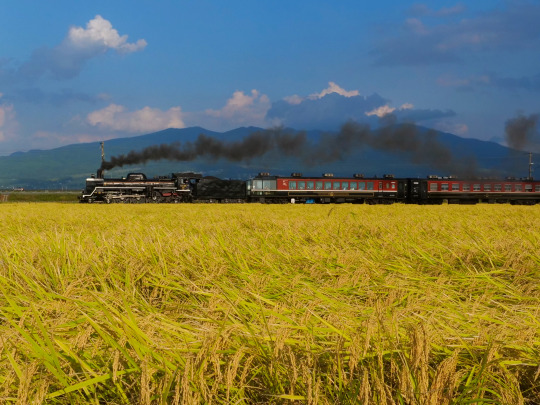
SLばんえつ物語号 会津豊川~姥堂 猫魔ケ岳をバックに黄金色の稲穂越しに 20230917
#steam locomotive#railway#japan#photography#fukushima#JR EAST#蒸気機関車#鉄道写真#福島県#会津#jr東日本#SLばんえつ物語号#磐越西線
14 notes
·
View notes
Text
Japan’s Tohoku Shinkansen passing at close to 300km/h. 🚝
—
The Tōhoku Shinkansen is a Japanese high-speed Shinkansen rail line, connecting Tokyo with Aomori in Aomori Prefecture in a route length of 674.9 km (419.4 mi), making it Japan's longest Shinkansen line.
It runs through the more sparsely populated Tōhoku region of Japan's main island, Honshu.
It was extended as the Hokkaido Shinkansen through the Seikan Tunnel to Shin-Hakodate-Hokuto (this section opened in March 2016) and is expected to be extended to Sapporo by 2030.
It has two Mini-shinkansen branch lines, the Yamagata Shinkansen and Akita Shinkansen.
The line is operated by East Japan Railway Company (JR East).
#Tohoku Shinkansen#Japan#East Japan Railway Company (JR East)#bullet train#High-speed rail#transportation#travel#passengers
5 notes
·
View notes
Text
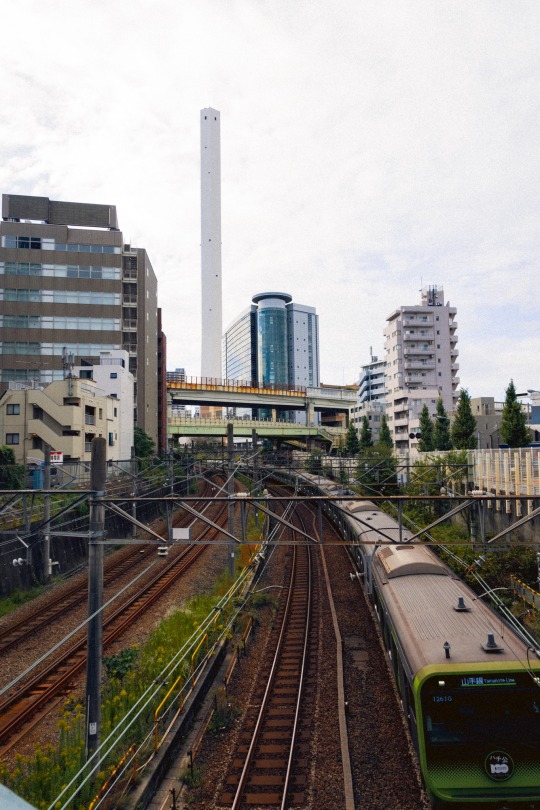
Ikebukuro. Toshima City. Tokyo, Japan.
2 notes
·
View notes
Text

Ochanomizu Station, September 2016
#mine#my photos#tokyo#japan#trains#ochanomizu#ochanomizu station#city#cityscape#東京#東京都#御茶ノ水駅#御茶ノ水#tokyo metro#jr east#chiyoda#kanda river
13 notes
·
View notes
Text

“JR East’s Alfa-X is the fastest bullet train in the world.”
3 notes
·
View notes
Photo



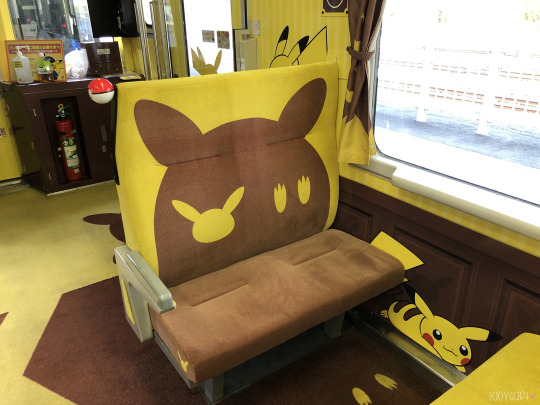


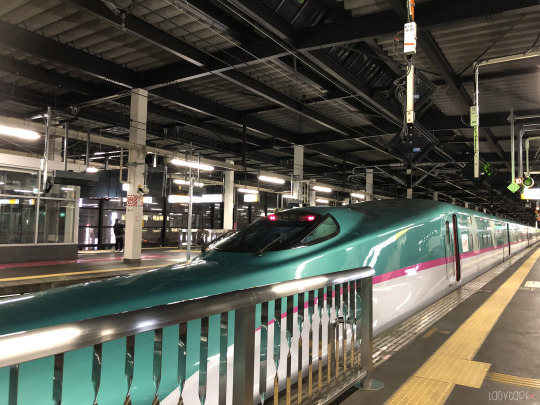



tokyo tohoku trip - day 1.
tohoku area is the northern part of the main peninsular in japan, and it’s not super famous as a tourist destination, however, there’s a lot to offer in the whole area and my friend has suggested that we explore a few towns and cities together during this trip.
so after a short sleep, i’m at tokyo station with my friend to redeem my 5 days jr east pass for tohoku area, which will allow me to use the tohoku shinkansen, jr local trains, jr buses and joyful trains, and many more, which you can find all the info on their official website.
if you are travelling a lot in 5 days within the tohoku area, it’s a really worthy pass to purchase, as a foreigner. tohoku shinkansen is a reservation seats only shinkansen, so it’s necessary to actually make reservations for all your trips, it’s best to plan your route beforehand and then go to the ticket counter and tell the staff which trains you would like to get onto.
for my case, it was really last minute and it was weekend, so the train that i wanted was full and good thing my friend was there to communicate with the staff about my plan and they finally suggested that i get a standing ticket for my first shinkansen in order for me to meet the schedule.
and the whole reason why there’s such schedule limitation is because i wanted to get on the pokemon with you joyful train, which only runs once a day every saturday and sunday. more about the pokemon train later...
this is my first experience to have a standing ticket for shinkansen, as all the previous times, i did get normal seats which is very comfortable. i also bought sandwiches for breakfast since i did not eat in the morning. standing tickets has train number on it, so you can only stay within that train. there’s some space in front and at the back of the train, which is quite nice and you can look out the window for the scenery. good thing that this ride is above ground, so it was quite nice to enjoy the scenery. i was okay for this standing ride, as there’s a lot of chance to sit later of the day.
i arrived at ichonoseki station around and make my way to the local train after storing my luggage at the station locker, as i plan to take the pokemon train at kesennuma station on the return trip. the local train ride gave a completely different feeling compared to shinkansen, as the speed difference is very obvious. the scenery along the countryside train tracks are amazing with beautiful sunshine. it was a really really slow and relaxing ride.
at kesennuma station, i got a short break and visited the convenient store to get water and snack, the local people are very nice and friendly, they thought i was japanese until i told them i wasn’t. and i’m actually happy that my japanese language is good enough for me to communicate with simple sentences.
the station also has quite a few pokemon related photospot, which is just so cute. even the station sign is pokemon themed. after a short wait, it’s finally time for the long awaited train ride. the staff is super friendly and helped me to take photos at every opportunity, which i’m super grateful about. there were families with young kids on board, some adult pokemon fans like me as well, but the train is not full or packed, so it was really comfortable.
the train has 2 sections, one section is the playroom and the other section is the seating area. everywhere you look on the train, it’s super cute and pikachu everywhere. i was so so happy and the inner kid in me wish to just stay on the train forever. the playroom has so much plushies to play and take photos with and it’s fully carpeted so you can sit anywhere and just enjoy the kawaii atmosphere and setup, they truly made sure every detail of the train is amazing. we also got a badge souvenir after answering a short survey (in japanese), and at certain train stops, the staff will lead us into the station for few minutes to get a pokemon train station stamp on the postcard that every customer received. it’s truly fun to experience everything during the entire ride. absolutely worth the time and money to try and get on the train at least once, especially if you are a pokemon/pikachu fan.
the train does stop at a few stations along the way and there’s some outdoor decorations setup at those station as photo spots. even without them, the countryside scenery is actually beautiful, especially as the sun was about to set, every photo is just so picturesque. and this whole fun filled experience is covered by the jr east pass!
got some onigiri after the ride arrived at ichinoseki station, since i did skip lunch that day. while i did not move a lot, i do need some energy to keep my body warm as the sun set was early and the weather gets cold very quickly. i continued with my journey up north to aomori by shinkansen which is the city i will be staying the night at.
from ichinoseki station, i took a shinkansen to morioka and made a brief stop to wait for the next shinkansen to aomori as there’s no direct connection, since ichinoseki is a smaller town/station. at morioka, i got to visit a bakery cafe below the station and enjoyed a beautiful and delicious strawberry tart, i do miss and love japanese desserts, just so pretty and so yummy with the fresh and good quality ingredients.
initially, i was planning to make a stop at hachinohe for dinner, but the restaurant i intended to go was fully reserved, hence i decided to just go to aomori straight and find something else for dinner there. the shinkansen is noticeably less crowded by now as most people has arrived at their destination by now.
shin aomori station is a relatively new looking station, and i do still need to take one more local train to arrive at the aomori station and walk to my hotel. it was here that i saw real snow for the first time! i was super excited about it and can’t wait to see more once i arrived. the walk to my hotel was not too far, but roads are covered in snow, it was quite beautiful to see so much white everywhere, even though the sky is dark by now. checking in to my hotel was easy, and the room is quite nice and spacious for one person.
then i went to nearby streets to hunt for food, and ended up at this kushiyaki placed called hyakushiki ひゃくしき 青森新町店, i believe this place is quite new though. the menu is completely in japanese, so i did spend quite a long time to just read everything. i ordered quite a few kushiyaki, chicken karaage and dashi tamagoyaki. the food is so so so good, ingredients are very fresh and the batter is so light and crispy too, a good find definitely.
after filling up my stomach, i called it a day and went back to my hotel for a hot bath to relax and went to bed for a good night sleep, as there’s more exciting activities to look forward the next day, which my friend will be joining me on the trip.
to be continued.
#lagycart travels#lagycart in japan#pokemon train#jr east pass#tohoku#japan#day 1#shinkansen#worth it#joyful train#pokemon with you#must try#beautiful#scenery#countryside#local train#amazing#enjoyable#fun filled day#nature#sunset#attention to details#ichinoseki#kesennuma#pikachu#friendly#nice#staff#aomori#first snow
3 notes
·
View notes
Text
#Japan's Shinkansen Bullet Trains#Full Automation#Driverless Travel#Automated shinkansen bullet trains#Central Japan Railway Co.#East Japan Railway Co.#Tokaido Shinkansen#Joetsu Shinkansen#Testing#Automatic train operating system (ATO)#Hamamatsu Station#Shizuoka Prefecture#Deviation#Arrival time error#JR Central officials#Challenges#Standardized departure#Transit and arrival times#Passenger comfort#Energy efficiency#Speed fluctuations#Grade 2 automation#Grade 4 automation#Tokyo Metro subway system#Yurikamome line#Toyosu#Odaiba#Command center#Emergencies#Grade 3 automation
0 notes
Text
Tokyo Subway: The Story Behind One of the World’s Most Complex and Efficient Metro Systems
5099800 © Robert Mroczek | Dreamstime.com
An Epic Tale of Innovation and Efficiency
The Tokyo Train and Subway System is a true marvel of transportation engineering. It has evolved over time to become one of the most efficient networks in the world, transforming Japan’s society and culture with its speed and convenience. From the early days of steam engines to the latest bullet trains, this…

View On WordPress
#expat#foreigner-friendly#Japan Railroad#japanese history#JR East#lifeinJapan#newcomer&039;s-guide#Toei subway#Tokyo metro#Tokyo subway system
0 notes
Text
Travel in Niigata: Echigo One and Two-Day Passes
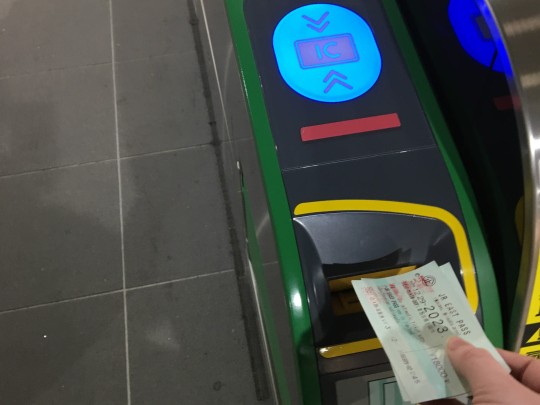
I recently learned some interesting new ways to travel in Niigata. Not only is there the JR East Nagano, Niigata area pass that also includes Nagano and Tokyo as well, but there is also the Echigo One-Day Pass and Echigo Two-Day Pass. These two passes both have more limitations than the JR East Niigata area pass, but they’re also much cheaper, making them worth it if you just need a couple of days of unlimited local train rides. It’s nice to know there are so many options for getting around Niigata!
The Echigo One-Day Pass (えちごワンデーパス) can be purchased any day of the year for a full day of use. You can buy it at the ticket machines or the window for 1,570 yen, which is certainly worth it if you’re planning on taking even one or two long train rides. It does have a pretty limited area, though, only including Niigata city and the immediate surrounding area. That’s more than enough space to cover in a day, but you won’t be able to go much further in any direction than Nagaoka, Aga, or Murakami. It also only works on trains–not buses–and both the shinkansen and limited express trains are extra since you have to get a limited express ticket, too. Still, it’s a good pass for if you plan to travel in Niigata, but want to stay close to the city.
Another option is the Echigo Two-Day Pass (えちごツーデーパス). The Echigo Two-Day Pass is 2,740 yen and includes a lot more of Niigata. In fact, it includes most of Niigata prefecture as well as a couple of stops in Fukuoka on certain train lines. However, as with the One-Day Pass, you can’t use it for buses and the shinkansen and limited express are extra. It also can only be purchased for weekends and holidays right now, which includes uses for Friday-Saturday and Saturday-Sunday. This pass works best if you want to travel in Niigata for a weekend and stop at a lot of places, especially if you’re planning to stay somewhere along the way. Since the local trains are slower, it can take a while to go to and from somewhere in one day.
Find more in Japanese here: https://www.jreast.co.jp/niigata/echigo-1day2daypass/
Find more about which trains you can ride in Japanese here: https://www.jreast.co.jp/tickets/info.aspx?GoodsCd=2654
Additionally, there’s also the JR East Nagano, Niigata area pass. This is like the regular JR East pass, but a little cheaper in exchange for the more limited area. While it is a lot more expensive at 18,000 yen, it comes with the widest area (including Nagano and Tokyo!), unlimited shinkansen rides, and 5-days worth of usage. It’s a good investment if you’ll be visiting for a while and want to make your way around the prefecture or just want to pop down to Tokyo for a few days. This pass is actually less than one round trip from Niigata city to Tokyo on the shinkansen, so even using it for one day saves you money. You can even get reserved seats for no extra cost. Just hit “Reserved Seat” then “Reserve seat with a discount ticket” on the machine, put your JR pass in, and pick your seat. The best thing (for me at least) is that, unlike the JR West pass, even foreign residents can buy JR East passes with their passports.
Find more here: https://www.jreast.co.jp/multi/en/pass/eastpass_n.html
At this point, I’ve gotten the chance to use all three of these passes: Echigo One-Day to visit Tsubame-Sanjo, Echigo Two-Day to go to the Tokamachi Snow Festival, and JR East during my trip to Tokyo. I’d say of all the passes, the Echigo Two-Day pass is the least worth it. As great as it is that the Two-Day pass covers a widerarea since you can’t use the shinkansen without paying extra, it’s not great for traveling those distances. Plus, it’s limited to weekends and holidays, so if you’re there for a few weekdays, you’re out of luck. The One-Day pass’s limited area means you can reach even the farthest stations in around an hour and JR passes don’t limit shinkansen use, but if you use the Echigo Two-Day pass to travel in Niigata, you might find yourself seeing more of the trains than the prefecture itself. However, all three are good for their own circumstances, so really consider what’s best for your trip.
#japan#jet program#niigata#niigata city#travel in niigata#echigo one day pass#echigo two day pass#jr pass#jr east#enjoyniigata#ourniigata#edgeofniigata
0 notes
Note
Do you have a personal ranking of the different convenience stores in Japan? The ones off the top of my head I can think of are 7-11, Lawson, Family Mart, Daily Yamazaki, and Ministop.
This is a great ask, very much my field of interest! But I don't rank them hierarchically so much as.... territorially(? situationally?) because they have different strengths but here it is!
------------------------------
7-11: The conbini I'm most attached to! Generally has the best bento selection, and also the best-smelling coffee. (All the grind-and-brew coffee machines are basically the same quality, but the 7-11 ones really smell great.)
FamiMa: The best fried chicken! And generally a good chuhi selection. Also has far and away the most iconic jingle, and now I get this absolute bop by Miyachi stuck in my head every time I visit.
Lawson: Best for its special stores! Discount store Lawson 100 was a godsend for groceries and household supplies my first year in Tokyo. And I will stop basically anytime I see a Natural Lawson (aka Natty Law aka Naughty Lad) because they have organic/imported/upscale/health/vegetarian stuff you won't find elsewhere.
Ministop: Great for softserve ice cream and also hotcase and deli items! The deli items feel more homemade than at the Big Three. Also they have halohalo and sticky rice dumplings that I always mean to try.
Daily Yamazaki: Kind of a wild card! These days they have interesting variety and grocery items (the other day I got these kimchis and a liter of unbelievably sweet organic soymilk that was in a plastic bag for some reason), fresh breads/pastries and Japanese sweets, and snacks that aren't major brands.
But! Until recently, they were kind of..... hmm. Of the two near me, one was staffed by a very old woman on an oxygen machine who completely ignored you (both things *very* unusual for Tokyo) and one by the absolute tiniest old woman I'd ever seen and a very smiley man who was either her elderly son or somewhat younger husband, both utter sweethearts. The stores were dingy and poorly lit, and the selection was somewhere between basics and bare bones—but also some nights they would sell fresh cream puffs from a French bakery?? Chaotic, kind of a grab bag, some Building 19 vibes (IYKYK). Then in maybe 2018ish, there was a major overhaul and now they are as shiny, well-lit, and antiseptically clean any other chain. If a little less friendly.
New Days: I added this one! Easy to overlook because they're teeny, with a very basic selection, but that's because they're only found inside of JR train stations. I don't think that they're anyone's conbini of choice, but they're there when you need them! (Sometimes.)
------------------------------
Also honorable mentions to Poplar, which I never see anymore (East Tokyo only?), and to Three-F, which seems to have been bought by Lawson, and 🫡 RIP to Sunkus (run by Circle K), which I always liked. When I lived near the red light district, we always used to stop at Tokyo's last surviving Sunkus on our way to see the pharmacy with the goat.
#i am sorry that this became a graduate-level thesis but#i LOVE conbinis#and also i have work that i simply do not want to do.#also wish i could provide goat pics#but they made it VERY clear about no photos of goat
197 notes
·
View notes
Text

SLばんえつ物語号 一の戸橋梁小舟寺舟山丙蕎麦畑から 2023.9.17
12 notes
·
View notes
Note
I visited Japan and China recently. In Japan, I had a lot of fun riding the 'JR' Shinkansen from Osaka to Tokyo. In China, I had lots of fun riding the 'CR' bullet trains all over the beautiful countryside. However, I'm now back here in the stateside, and I have a burning question...
How come the USA doesn't have commercial passenger bullet train service?
I thought we were to greatest country on earth, according to a certain billionaire former president of ours who is now fighting to keep himself out of prison and trying in vain to get himself back into power (he wants the one P not the other P). If all the other major global powers and some non-powers have bullet trains, and we're supposedly the greatest country on earth, why do we in the USA do not have even one bullet train???
Kudos in advance for answering this question as quickly as you can.
There are several reasons but lets look at 4, Firstly, in the early 2010s, there was a push for High-speed Rail, The Obama Administration even promised to pay for several projects, most notably High-speed Rail between Chicago and Minneapolis, but the Governor of Wisconsin told Obama that he didn't want the money to build high speed rail.
Next there's the California High-speed Rail project which is currently building High-speed Rail between LA and San Francisco, due to outdated environmental laws, and constant suing from land owners in the central valley, the project took years to begin construction and is going wildly over budget and isn't expected to finish with phase 1 till the late 2030s
Florida in the 80s through to the 2000s had plans for HSR between Miami and Tampa, but that was canceled due to Rick Scott being against the project and the Florida East Coast Railway refusing to cooperate
Finally there is the Northeastern Acela Corridor, which has some high speed sections but hasn't been able to increase speeds on much of the track due to local opposition and a lack of funding, there will be some newer trains somewhat soon though that will increase speeds
95 notes
·
View notes
Text
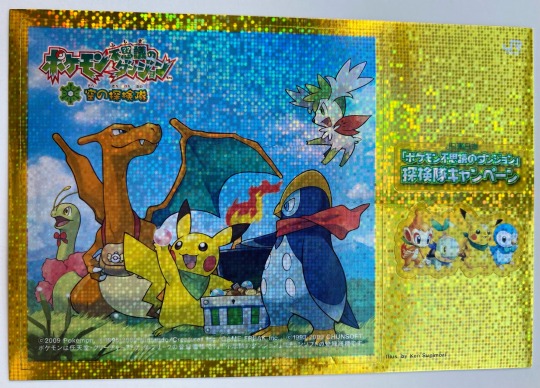
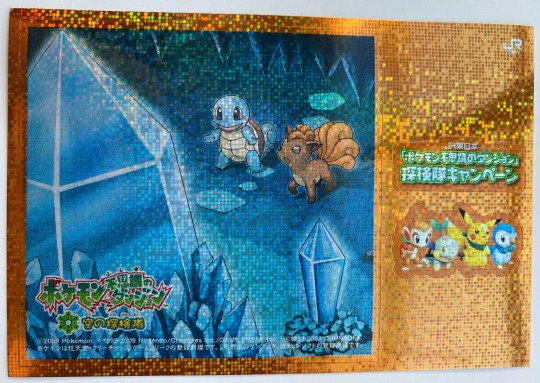




Pokémon Mystery Dungeon: Explorers of Sky Holographic Seals
JR East ★ 2009 ★ Japan
These stickers were given away in a JR East bullet train campaign that ran from March 20th to April 5th. During this campaign, children of elementary school age could receive these seals from Suica (rechargable fare cards utilized in most forms of Japanese public transit) touch stations. Once all four of the available seals had been collected, the remaining two seals could be collected by visiting both goal locations.

Campaign information sourced from @pmdcollector's PMD Archive; see her website for more campaign pictures and in-depth research regarding this event.
#my pmd collection#pokemon mystery dungeon explorers of sky#pokemon mystery dungeon#explorers of sky#pmd explorers#pmd eos#pmd2#pmd#chimchar#turtwig#pikachu#piplup#meganium#charizard#prinplup#shaymin#sky forme shaymin#squirtle#vulpix#oddish#phanpy#pelipper#bidoof#shinx#grovyle#time gear
82 notes
·
View notes
Text
福島県
Japanese Prefectures: Tohoku - Fukushima
都道府県 (とどうふけん) - Prefectures of Japan
Learning the kanji and a little bit about each of Japan’s 47 prefectures!
Kanji・漢字
福 フク blessing, fortune
島 しま、トウ island
県 ケン prefecture
東北 とうほく north-east, Tohoku (northernmost six prefectures of Honshu)
Prefectural Capital (県庁所在地) : Fukushima (福島市)
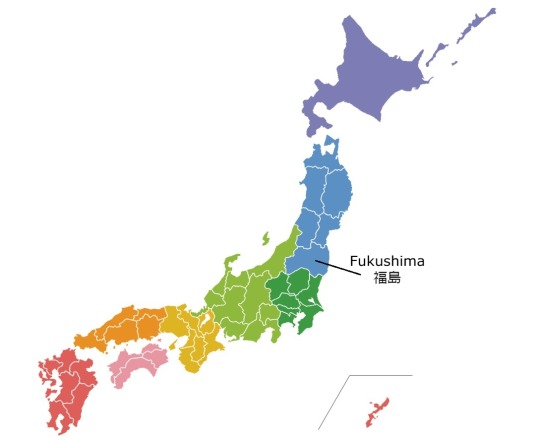
Fukushima is the third largest prefecture of the 47 prefectures of Japan and stretches between the mountainous interior of Northern Honshu to the Pacific Ocean. Like most of the other Tohoku prefectures, Fukushima boasts expansive natural beauty, relaxing hot springs, a rich history, and excellent ski resorts. The feudal Aizu Clan, of the still-standing castle town of Aizu-Wakamatsu, remained loyal to the shogun, even after the shogun was removed from power during the Meiji Restoration. This loyalty led to the Aizu area becoming a battleground of the Boshin War in 1868, where those loyal to the shogun were pushed northwards into Tohoku and Hokkaido as they resisted the reformers and those loyal to the emperor. The Aizu area boasts the post town of Ouchijuku, with buildings retained from the samurai era; Tsuruga Castle; hot springs; and a famous sake brewery.
The March 2011 earthquake and tsunami devastated the coastal areas of Fukushima Prefecture and caused a nuclear accident at the Fukushima Daiichi Nuclear Plant. Tens of thousands of residents were evacuated and a no-entry zone was set up around the nuclear plant. The no-entry zone makes up less than 3% of the prefecture's area, and even inside most of the no-entry zone, radiation levels have declined far below the levels that airplane passengers are exposed to at cruising altitude. Thus Fukushima has been deemed safe for tourists to visit. Wide areas of western Fukushima, in particular, escaped much contamination, including the mountainous interior around the historic city of Aizu-Wakamatsu. And even in most of the eastern parts of the prefecture, radiation levels have by now decreased to pre-2011 levels due to natural decay and decontamination efforts.
Recommended Tourist Spot・おすすめ観光スポット
Ouchijuku - 大内宿
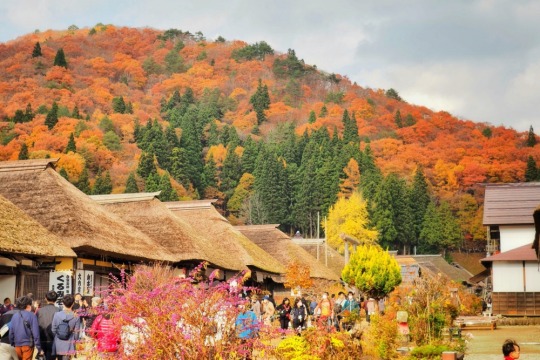
Photo by JR Times
If you want a taste of Edo Period Japan, Ouchijuku is the place for you. This is a former post town along the Aizu-Nishi Kaido trade route, which connected the centers of Aizu (a former castle town to the north in Fukushima) and Nikko (to the south in Tochigi prefecture) during the Edo Period. Restrictions set by the shogunate required travelers to make the journey on foot, and thus post towns such as Ouchijuku developed along the route to provide food, accommodation, and rest. Ouchijuku has been restored to look as it did in the Edo Period, with thatched roof buildings that house a variety of shops, restaurants, and minshuku (small traditional Japanese inns).
The former Honjin, or principal inn for high ranking government officials, is currently a museum, offering an example of elegant traditional housing interiors of the Edo Period and includes a collection of dishes, clothing, and other artifacts.
The Takakura Shrine is a five minute walk off the main path and hosts a unique purification fountain in the midst of a stand of Japanese cedar trees, and was dedicated to Prince Mochihito, who died in June 1180. Near the beginning of the Genpei War (1180-1185) during the Battle of Uji, the prince fled to the Phoenix Hall of the Byōdō-in temple, where he was later captured and killed at the torii gate of Kōmyōsan. It was said that he managed to escape, and hid in Ouchijuku.
Shohoji Temple is located at the end of the main street and up a steep flight of stairs. At the top of the path visitors can enjoy a panoramic view of Ouchijuku and its surroundings.
Regional Cuisine - 郷土料理
Kitakata Ramen - 喜多方ラーメン
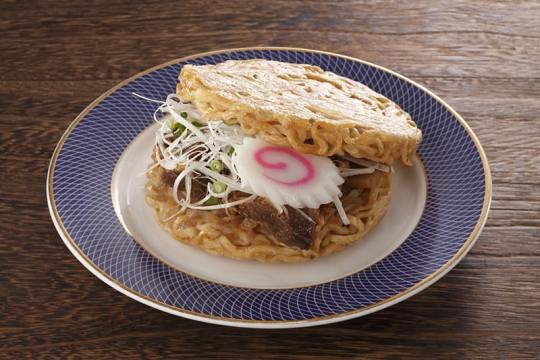
Photo by JR Times
Kitakata ramen is a gourmet specialty from Kitakata, Fukushima prefecture. The origin of these noodles is said to be from Chinese noodles sold in stalls by young people who had come from China from 1920-1930. The noodles are thick and flat with a firm appearance and texture and a relatively high moisture level. The soup is a soy base, with flavors varying depending on the shop, from miso to salt. To determine where to eat, there is a Ramen Map located at the tourist information center in Kitakata.
The popular Kitakata Ramen Burger is made from baked and hardened noodles together with pork, menma, and green onions. Kitakata is also known for its unique culture of eating ramen early in the morning. People who started work very early in the morning at sake breweries and on farms would eat ramen early in the morning, and thus the habit began. "Morning ramen" is available at many shops in the area.
Fukushima Dialect・Fukushima-ben・福島弁
Fukushima-ben or the dialect of Fukushima is similar in some ways to the other Tohoku (or North-East Japan) dialects, but also has some key differences. Here are some interesting phrases I found.
洗濯物をおっこむ (sentakumono o okkomu)
Standard Japanese: 洗濯物を取り込む (sentakumono o torikomu)
English: to take in the laundry
ぶっちめた (bucchimeta)
Standard Japanese: ぶつけた (butsuketa)
English: to hit (e.g. one's head)
すっぺったこっぺった (suppetta koppetta)
Standard Japanese: ごちゃごちゃ言うな (gocha gocha iu na)
English: don't complain about it
うっちしい (ucchishii)
Standard Japanese: うるさい (urusai)
English: noisy, annoying
#japanese prefectures#日本語#japanese#japanese language#japanese langblr#langblr#studyblr#都道府県#福島県#fukushima
85 notes
·
View notes
Note
Hey hey! I wanted to ask what are some of your more “out there” headcanons? Maybe there’s no basis in canon (or just a shred of a basis) but you still believe it wholeheartedly?
Baaaaabs!! Thank youuuuuuu ♥️♥️♥️
I feel like my whole bible of the Pesto brothers is perfect for this exact kind of headcanons but for once I won't ramble about them ahahaha-
• Zeke's head is full of crazy "conspiracy theories". He thinks massage chairs are evil, mammoth cloning is happening somewhere in Antarctica and canned tuna is not a real food. He never have any logical explanation to his belief, just that he can feeeeeel it
• Jocelyn is like, absolutely terrible at Geography. She can't tell apart the West and the East and one time points at Australia on the world map asking if this is North America. "Jocelyn, can you name a country that starts with an U" - "Ummm, Europe :D!"
• There was a phase when Louise was super into demon summoning rituals. She kept dragging Tina and Gene to help her summon one during Halloween. She thought if they bribe that thing enough candies and Bob's pumpkin pie it would get her a pet shark. Cuz Santa and Tooth Fairies suck ass, they never kept their promises 🙄
• Teddy and Trev go to the same book club. One time they gush about Little Women for like an hour
• Trev is no.1 Lego fanboy. He keeps buying them for Andy & Ollie both because he loves the twins AND so he can have an excuse to play those with them
• Bob and Linda normally would be hesitated to buy the kids new board games cuz they ain't cheap until Louise says something like: "Guess we'd never know which one of you two is better at this game" and that's all it takes for them muppets to grab the credit card
• Mr Branca loves Italian opera. It's what he listens to when he's working (he told Tina he was once in a relationship with an Italian opera singer, but would you believe him 👀?)
• Jimmy Jr is probably the second person of the group to have nonsensical fights with Tammy the most, after Tina. Tammy loves annoying him and half of the time he just kinda ignores it but when it comes to things boy's actually petty about he ain't letting it go. He's terrible at comebacks though
• Cynthia has a collection of expensive purses and Logan steals one of them once to gift it to his prom date trying to ask her out. He also steals his mom's made-in-Japan fancy pens a lot
#this is so fun 😭 thank you#some of these are implied in my doodles but you know i still love talking about them#bobs burgers#bob's burgers#asks#Tina was pretty much no.1 fan of Branca's stories and even more so with this whole romance lore#she was INVESTED
24 notes
·
View notes
Text
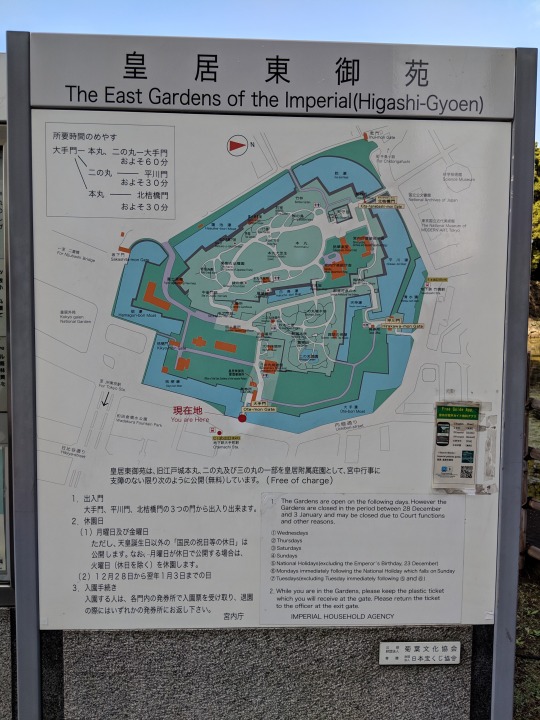
皇居東御苑
The East Gardens of the Imperial (HIgashi-Gyoen)
所要時間
大手本 → 本丸、二の丸ーー大手門
およそ60分
→二の丸、ーーー平川門
およそ30分
→本丸ーーーー北桔橋門
およそ30分
乾門 Inui-mon Gate
至千鳥ヶ淵 For Chidorigafuchi
科学技術館 Science Museum
国立公文書館 National Archives of Japan
東京国立近代武術間 The National Museum of MODERN ART, Tokyo
乾濠 Inui-bori Moat
発券所 Ticket office
北桔橋門 Kita-hanebashi-mon Gate
平川濠 Hirakawa-bori Moat
1a出口 (Exit)
地下鉄 竹橋駅 Takebashi Sta.
清水濠 Shimizu-bori Moat
平川門 Hirakawa-mon Gate
天守台 Tenshudai (Tenshukaku Dunjon Base)
宮内庁書陵部庁舎 Shoryobu (Archives and Mausolea Department Bldg.)
桃華楽堂 Gakubu (Music Department Bldg.)
梅林坂 Bairin-zaka Slope
都道府県の木 Symbolic Prefectural Tree Emblems
天神濠 Tenjin-bori Moat
発券所 Ticket office
大手濠 Ote-bori Moat
内堀通り Uchibori-street
諏訪の茶屋 Suwano-chaya Tea House
竹林 Bamboo Garden
石室 Ishimuro (Stone Cellar)
桜の島 Sakura Blossom Island
富士見多門 Fujimi-tamon Defence-house
バラ園 Rose Garden
茶畑 Tea Garden
ユーロッパアカマツ Scots Pine
本丸 Honmaru
本丸大芝生 Honmaru Oshibafu (Lawn)
本丸休憩所 Honmaru Rest House
汐見坂 Shiomizaka Slope
白鳥濠 Hakucho-bori Moat
展望台 Observatory
二の丸休憩所 Ninomaru Rest House
二の丸雑木林 Ninomaru Grove
秋の七草 The Seven Flowers of Autumn
新雑木林 Renewed Grove
菖蒲田 Iris Garden
二の丸庭園 Ninomaru Garden
蓮池濠 Hausike-bori Moat
松の大廊下跡 Site of Matsuno-o-roka Corridor
果樹古品種園 Orchard (Old Species of Japanese Fruits)
野草の島 Wild Grass Island
緑の泉 Green Fountain
中雀門跡 Site of Chujaku-mon Gate
大番所 O-bansho Guardhouse
中之門跡 Site of Nakano-mon Gate
百人番所 Hyakunin-bansho Guardhouse
同心番所 Doshin-bansho Guardhouse
大手休憩所 Ote Rest House
三の丸尚蔵館 Sannomaru Shozokan The museum of the Imperial Collections
皇居東御苑管理事務所 Office of the East Gardens of the Imperial Palace
発券所 Ticket Office
大手門 Ote-mon Gate
現在地 You are Here
C13b出口 (Exit) Otemachi Sta.
坂下門 Sakashita-mon Gate
富士見櫓 Fujimi-yagura (Mt. Fuji View Keep
蛤濠 Hamaguri-bori Moat
桔梗門 Kikyo-mon Gate
桔梗濠 Kikyo-bori Moat
←至 二重橋 For Nijubashi Bridge
皇居外苑 Kokyi gaien National garden
至 JR東京駅 For Tokyo Sta.
和田倉噴水公園 Wadakura Fountain Park
日比谷通り Hibiya-street
皇居東御苑は、旧江戸城本丸、二の丸及び三の丸の一部を皇居付属庭園として、宮中行事に支障のない限り次のように公開(無量)しています。(Free of charge)
1.出入門
大手門、平川門、北桔橋門の3つの門から出入り出来ます。
2.休園日
(1)月曜日及び金曜日
ただし、天皇誕生日以外の「国民の祝日等の休日」は公開します。なお、月曜日が休日で公開する場合は、火曜日(休日を除く)を休園します。
(2)12月28日から翌年1月3日までの日
3.入園手続き
入園するは、各門内の発券所で入園票を受け取り、退園の際にはいずれかの発券所にお返し下さい。
宮内庁
1.The Gardens are open on the following days. However the Gardens are closed in the period between 28 December and 3 January and may be closed due to Court functions and other reasons.
① Wednesdays
② Thursdays
③ Saturdays
④ Sundays
⑤ National Holidays (excluding the Emperor’s Birthday, 23 December)
⑥ Mondays immediately following the National Holiday which falls on Sunday
⑦ Tuesdays (excluding Tuesday immediately following ⑤ and ⑥)
2.While you are in the Gardens, please keep the plastic ticket which you will receive at the gate. Please return the ticket to the officer at the exit gate.
IMPERIAL HOUSEHOLD AGENCY
公益財団法人菊葉文化協会
寄贈 財団法人日本宝くじ協会
Vocab
皇居(こうきょ)imperial
御苑(ぎょえん)imperial garden
所要時間(しょようじかん)time required, time taken
至(し)to
科学時術(かがくじじゅつ)science and technology
近代美術館(きんだいびじゅつかん)museum of modern art
濠(ほり)moat, canal
発券(はっけん)issuing (a ticket, etc.)
宮内庁(くないちょう)Imperial Household Agency
書陵部(しょりょうぶ)agency that takes care of records and the tombs
庁舎(ちょうしゃ)government office building
梅林(ばいりん)plum grove
都道府県(とどうふけん)prefectures of Japan
竹林(ちくりん)bamboo grove
茶畑(ちゃばたけ)tea field
ユーロッパアカマツ Scots/Scotch pine, Pinus slyvestris
芝生(しばふ)lawn, grass
休憩所(きゅうけいしょ)rest area, rest stop
展望台(てんぼうだい)observation deck
雑木林(ぞうきばやし)thicket; grove of miscellaneous trees
秋の七草(あきのななくさ)seven flowers of autumn: bush clover, Chinese silvergrass, kudzu, fringed pink, golden lace, thoroughwort, and balloon flower
菖蒲(しょうぶ)Japanese iris (Iris ensata var. ensata) [coll.]
果樹(かじゅ)fruit tree
品種(ひんしゅ)breed variety, cultivar
野草(のぐさ)wild grasses
泉(いずみ)fountain
番所(ばんしょ)guardhouse
桔梗(ききょう)Chinese bellflower (Platycodon grandiflorus)
外苑(がいえん)outer garden
噴水(ふんすい)water fountain
付属(ふぞく)being attached (to), belonging (to)
宮中(きゅうちゅう)imperial court
行事(ぎょうじ)event, function
支障(ししょう)obstacle, hindrance
休園日(きゅうえんび)day on which a park (or kindergarten or zoo) is closed
祝日(しゅくじつ)national holiday
なお furthermore
除く(のぞく)to exclude, except
手続き(てつづき)procedure, process
票(ひょう)ticket, stub (suffix)
公益財団法人(こうえきざいだんほうじん)public interest incorporated foundation
文化協会(ぶんかきょうかい)cultural association
公益財団法人菊葉文化協会(こうえきざいだんほうじんきくようぶんかきょうかい)a cultural association that focuses its research on making artifacts of the imperial household available to the public.
寄贈(きぞう)donation, gift
宝くじ(たからくじ)lottery ticket
#日本語#日本#japanese language#japanese langblr#japanese vocabulary#japan#東京#Tokyo#Tokyo imperial gardens#皇居東御苑
12 notes
·
View notes